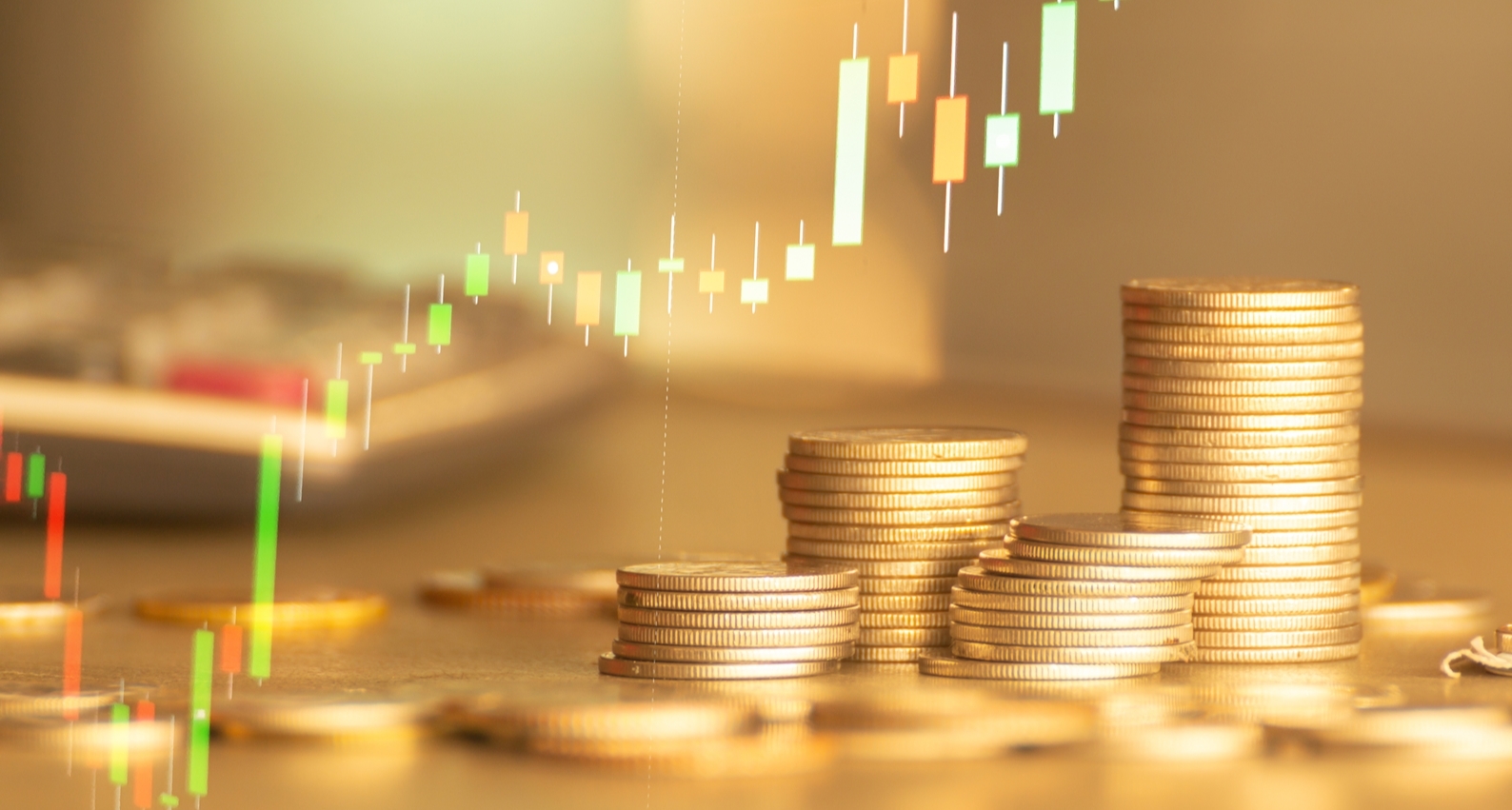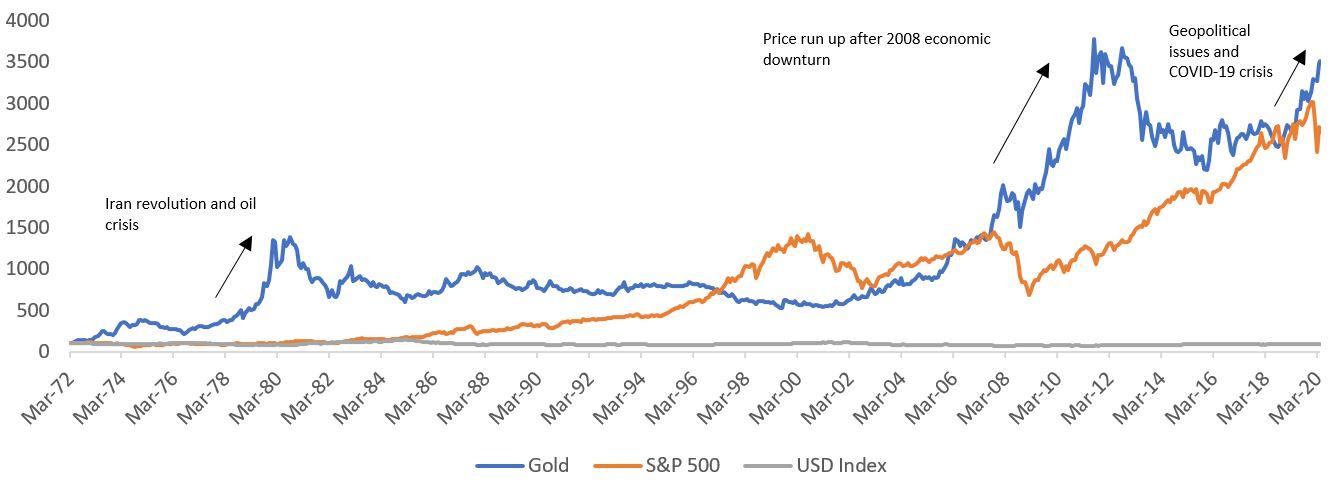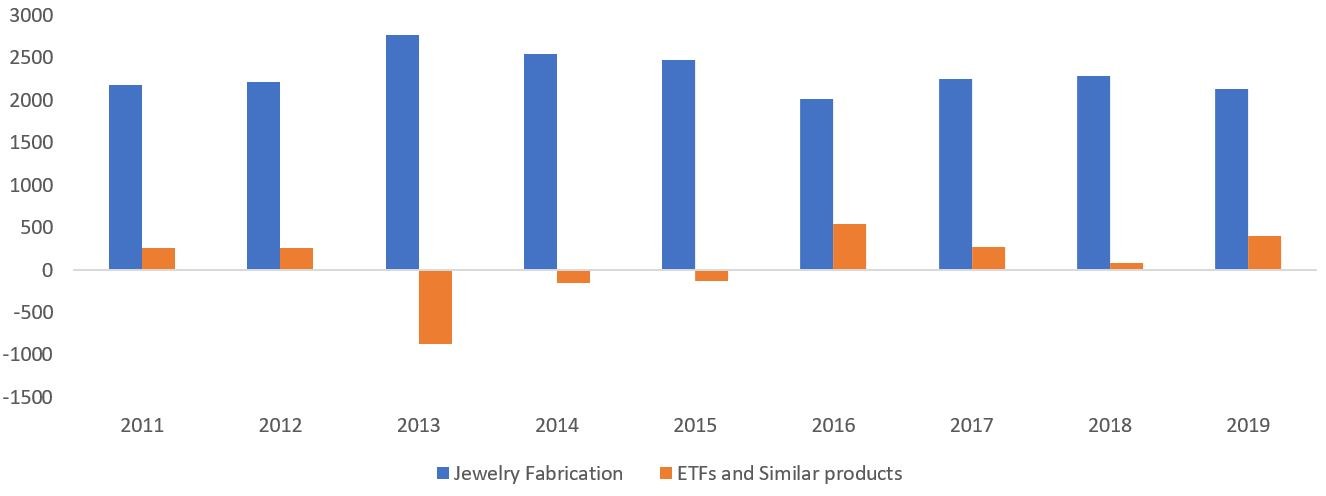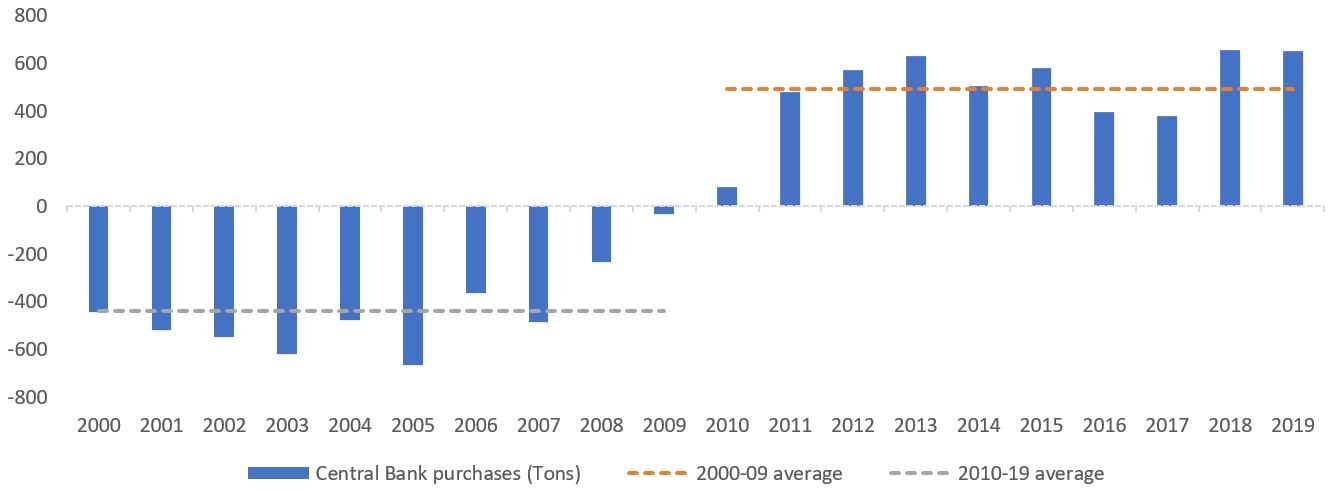All that Glitters is Gold
Published on 12 May, 2020

Gold remains a haven for investors as it is not adversely impacted by the COVID-19 outbreak. The rising gold prices of 2019 are continuing their upward trend in 2020, reaching new highs. The demand pattern of this precious metal is shifting, and the supply side is now facing constraints. Yet, gold could well be the savior that investors need to safeguard their money.
The year 2019 was ‘golden’ for the precious metal as its prices rose 18.3% YoY. Gold prices further continued their climb in 2020, touching multi-year highs and leaving traders and investors divided over potential future returns from the yellow metal. In 2019, gold prices breached the USD1,500/ton mark for the first time in six years as investors increased their investment in gold, driven by economic uncertainties caused by geopolitical tensions such as the US-China trade war, Brexit, the Hong Kong protests, US-Iran relations, and terrorist drone attacks on Saudi oilfields. Gold prices continued to rise in 2020 as economic uncertainties spiraled up with the onset of the COVID-19 pandemic. With most economies facing imminent recession, global equity markets sinking, and oil markets crashing, the only safe haven for investment seems to be gold.
The current economic turmoil has made ‘risk averse’ the new mantra in the investment space. From individual investors to asset managers, all are rushing to buy gold, the safe haven since time immemorial. Gold has a low or negative correlation with most asset classes and therefore is an important element when seeking portfolio diversification. It is a unique substance and though it finds limited usage in the industrial applications as opposed to the other commodities, it has great storage value. Many still consider the yellow metal an alternate global currency. Besides, gold offers deep liquidity, being recognized worldwide as a precious metal, unlike paper money, which is based on a promise of repayment. An old adage says “gold is the only financial asset that is not simultaneously someone’s liability.”
Gold price movement against S&P 500 and USD Index (Rebased)

Source: Bloomberg
Shifting pattern of gold demand
The demand for gold arises from areas as diverse as jewelry, technology, investment, and central banks. It is a great asset for all segments of users and assumes importance for them at various points in the economic cycle.
According to the World Gold Council (WGC), the pattern of demand for gold changed significantly during 2019; the surge in gold-backed exchanged traded funds inflows added 401 tons during the year, taking ETF holdings to an all-time high of 2,885.5 tons. In dollar terms, annual net inflows of USD19.2bn and an 18% rise in gold price together raised the assets under management to USD141.1bn by the end of 2019. In Q1 2020, gold ETF attracted huge inflows (298 tons), which pushed global holdings of these products to a new high of 3,185 tons. Soft monetary policies and low to negative interest rates, geopolitical uncertainties, and momentum-driven inflows (because of rising gold prices) have been key reasons for the rising interest in gold.
Meanwhile, demand from the consumer segment declined steeply due to the high price of the metal. In fact, the jump in ETF inflows helped offset the weakness in consumer demand, which slipped 6% YoY in 2019. In 2020, the global demand for jewelry plummeted 39% YoY to 325.8 tons due to the COVID-19 crisis and surging gold prices.
ETF inflows compared to the demand for jewelry fabrication (Tons)

Source: Bloomberg
Central banks mark 10 years of net gold purchase
The year 2019 also marked the tenth consecutive annual period in which central banks of several countries remained net purchasers of gold, adding 650.3 tons during the year as per WGC. This figure was marginally shy of the all-time high of 656.2tons in 2018, since the dollar’s convertibility to gold was stopped in 1971 following an end to the Bretton Woods system. During the current decade, central banks of many nations have added 5,019 tons back into official gold reserves globally, with an annual average of 492.0 tons, compared with average annual net sales of 438.9 tons in the preceding decade. Clearly, gold’s role and relevance in the global economy have resurged since the 2008 financial crisis as the period thereafter brought on escalating trade wars, armed conflicts, and low or negative interest rates. Central banks have responded with higher allocations to gold in their reserve portfolios. Even in Q1 2020, central banks continued to accumulate gold, albeit at a slower pace.
Annual net purchases by central banks (Tons)

Source: World Gold Council
It is noteworthy that during 2019, 15 central banks increased their gold reserves by at least 1 ton. This demand comes from the central banks of emerging economies seeking to bolster or diversify their overall reserves. As the global economy becomes more interconnected than ever before, the performance of the US economy, and even the US dollar (the dollar), cannot be studied in isolation. Even though a collapse of the dollar seems implausible, central banks may want to shore up their reserves by adding gold to the mix. Also, there have been instances where major economies such as Russia and China have tried to bypass the dollar-denominated payments owing to the trade tariffs and sanctions imposed by the US, which hinder the development of other economies. The US is known to wield its currency as a weapon to make other countries fall in line with its terms. Furthermore, the debt burdens of emerging economies are magnified by the strength of the dollar; the local currency’s weakness handicaps these countries as they are required to repay loans with depreciated currency.
Future supply side trends make an interesting case for the value of surface gold
Gold is a rare metal that occurs in a natural molten state under the earth’s surface. Until date, about 190,000 tons of gold have been extracted from the earth. But the setting up of new gold mines has been declining since 2000. This could also be attributed to the high costs associated with new mines and the shrinking exploration budgets of mining companies. Gold exploration is an expensive process and any new mine requires a lead time of 10–20 years before it can produce material that can be refined and commercialized. In terms of growth, mining companies need to explore new mines to ensure future income.
Gold Exploration Trends

Source: S&P Global Intelligence
On the contrary, mining companies are now allocating a greater proportion of their exploration budgets to mines with proven assets. This could help reduce their risk exposure during an economic downturn and ensure returns on their investment. The S&P Global Intelligence points out that there have been an average of only 54 initial resources from 2015–19 compared to 94 from 2010–14. The size of initial resources is also diminishing; the 176 initial resources reported since 2015 have an average endowment of 559,037 ounces, whereas the 271 resources reported during 2010–14 averaged 835,000 ounces, with less spending towards the grassroots-level of exploration (even the largest of mining companies allocate less than 0.5% of their budgets to what is known as “grassroots” exploration). Global miners are instead looking at mergers and acquisitions to consolidate market positions as the gap between the exploration price index and the pipeline activity index widens, making it tougher for existing mines to increase their production organically. Some prominent mergers are the Newmont-Goldcorp merger (formed the world’s largest gold-producing company) and the Barrick Gold and Randgold merger.
In 2019, the annual supply of gold increased 2% to 4,776.1 tons. This was achieved purely from recycling and hedging as mine production worldwide slipped 1% to 3,463.7 tons. In Q1 2020 as well, mine supply was hit due to the COVID-19 outbreak, which forced mine closures to stem the spread.
What this means for gold investment
We can safely assume that any future gold mining, an inherently expensive process, is likely to produce diminishing output. However, due to its scarcity, the metal will hold value interminably as gold still seems an undervalued asset given the supply demand mismatch. We expect gold prices to remain at the current levels, or even go up further, considering the COVID-19 crisis, ensuing economic uncertainty and the aftermath of bailout packages from central governments that wish to salvage their crumbling economies. Central banks may try and infuse liquidity by printing more money or lowering interest rates which will further push investors to demand more gold. Therefore, despite the short-term headwinds, the long-term story of gold remains intact.
